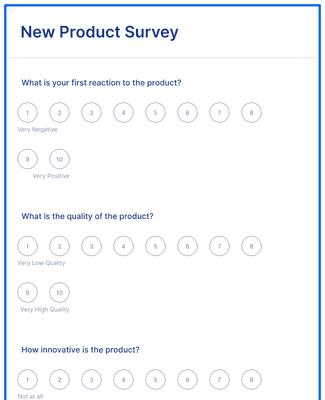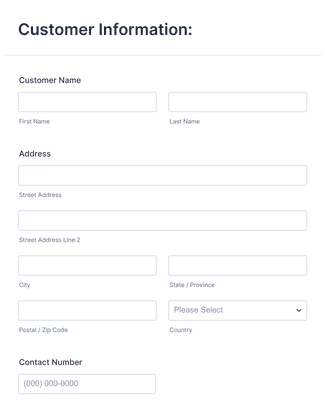Free Online Pricing Survey
Jotform’s pricing survey lets you create a free online pricing survey to collect customer feedback on your pricing structure and optimal product prices. Use its drag-and-drop survey builder and 10,000+ form templates to customize questions without coding and share or embed your survey to gather responses. Analyze collected data in Jotform Tables to understand pricing insights and customer preferences.
Templates
Free Pricing Survey Templates
Unsure how to start building your own survey? Jotform has you covered. Select one of our ready-made survey templates to get started. Add your own survey questions, use widgets of your choosing, and customize fonts and colors to match your brand.
Product Overview Survey

New Product Survey

Product Survey Form

Benefits
Powerful Drag and Drop Form Builder
Create Personalized Surveys
With Jotform you can create powerful online surveys that work for any business need. Use our drag-and-drop builder to design a survey that matches your company’s branding. You’ll also have access to thousands of fully customizable survey templates to use as a starting point.
Analyze Data in Jotform Tables
Collect valuable customer information with your personalized Jotform survey. Manage and analyze survey responses in Jotform Tables to gain a deeper understanding of consumer opinions and trends and to boost your profit margin.
Seamless Survey Sharing
Once you’ve created the perfect survey for your business, you’ll have a variety of ways to send it to your customers. Share the survey by embedding it directly into your website, setting up automated emails, or sharing via a scannable QR code.
Engaging Surveys
Build surveys that your customers enjoy filling out. With Jotform, you’ll have the option to make your survey questions appear one at a time, add a progress bar so your customers know how many questions are left, and provide them with a save and continue later option for convenience.
Report Building Made Easy
Generate reports that work for your business with Jotform Report Builder. Convert all your survey response data into professional reports to send to stakeholders and team members. Share your reports via email, embed them in your website, or download them as PDFs.
Testimonials
What our users say about Jotform
Learn More About Pricing Survey
All your questions about Jotform — answered. Check out our FAQs for answers to common questions, or contact our support team for further information.
What kind of data should you collect in your survey?
Some data types that are useful to collect are customers’ acceptable price range, traits and attitudes, demographic data, and how they benchmark against your competitors.
How do you perform a price sensitivity analysis?
To perform a price sensitivity analysis, divide the percentage change in quantity demanded by the percentage change in price.
What are the four types of pricing?
The four types of pricing are value-based, competition-based, cost-plus, and dynamic pricing.
What are the three pricing objectives?
The three pricing objectives are growing, skimming, and following.
What are the four goals of pricing?
The four pricing goals include profit-oriented pricing, competitor-based pricing, market penetration, and skimming.